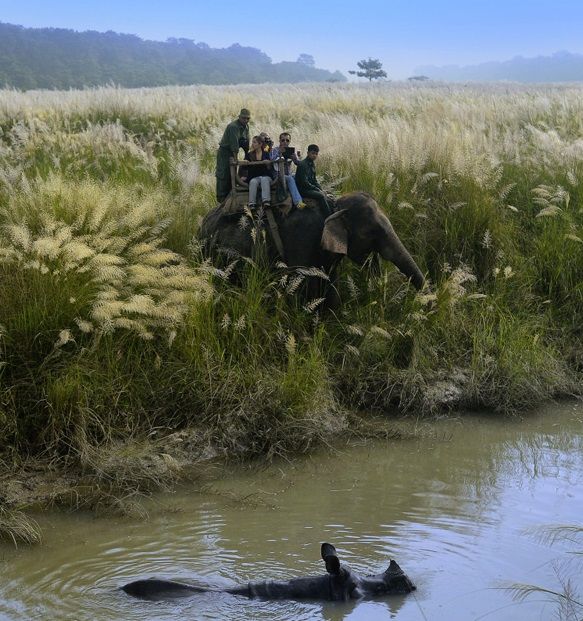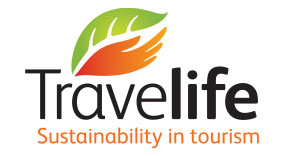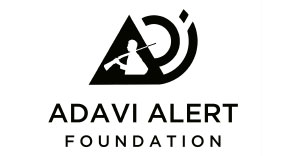
TOFTigers publishes its approach to the issue of Elephant-backed safaris in nature tourism
First published in 09 March 2017 – Revised in June 2019
Addressing an Elephantine Problem
The welfare of captive elephants is rightly a topic of intense debate among tour operators and travel providers, animal managers, conservationists, scientists, visitors, the general public, animal welfare/rights groups and the media. Common concerns, especially on welfare, raised about elephant tourism or elephant safaris in particular are complex in their nature and impact, and call for urgent scientific evaluation as well as for realistic solutions to ensure the sustainable and ethical management of captive elephants in the future.
The interaction between elephants and people has a 5000 year old cultural and commercial history and elephants continue to play a role in the economy. According to the International Union for the Conservation of Nature (IUCN) there are approximately 13,000 Asian elephants in captivity used for tourism, logging and transport throughout the Asian elephant range countries (AsERSM, 2006). It is estimated there are 3600 elephants in captivity in India, mainly used for religious ceremonies, in cities for tourism and a small number kept by forest departments (and most often used in anti-poaching and protection) and some private resorts in parks across India and Nepal.
TOFTigers recognizing the urgent need to create more awareness about both the problems and the possible solutions as well as provide recommendations to improve health care and management practices for captive and orphaned elephants, and we have based our views on the ACEWG’s recommendations.
In June 2015 a group of regional elephant experts and specialists, veterinarians, researchers and conservationists formed an Asian Captive Elephant Working Group (ACEWG) (www.acewg.org) and in February 2016 they released this statement, and this statement remains good today:
The ACEWG Acknowledges:
- Closing all elephant backed safaris or tourism camps is not a realistic option for a variety of reasons, including the lack of alternative livelihoods for both people and elephants. Releasing captive elephants back into the wild should be explored, but is currently not a realistic option for a large majority of captive elephants due to a lack of suitable habitat within elephant range countries, the high levels of human-elephant conflict across Asia, and the risks – real or perceived – that releases will result in increased human conflict.
- There are a variety of opportunities or uses for elephants in tourism facilities including, but not limited to activities such as riding, bathing, interaction with tourists, shows, mahout experiences and zoo style viewing of elephants in a landscaped area. In addition, these facilities have the potential to provide favourable conditions for studying and offering education about elephants.
- The relationship between humans and elephants has existed for thousands of years. The elephant tourism industry provides an opportunity to maintain the knowledge and historic cultural value of elephants in ASEAN range countries, and showcases the deep human-elephant bond that encourages an understanding and appreciation for elephants.
- With limited possibilities for raising the significant income required for elephant food and care, an increasing number of captive elephants now depend on employment in the tourism industry.
- Elephants are intelligent and mobile animals with a highly developed social structure. They have complex needs and, in captivity, require professional management and care protocols.
- Elephants have the capacity to be fatally dangerous to humans and other elephants in both captive – and wild situations – and must be managed accordingly.
- The use of elephants in tourist camps has raised global concerns and public debate. It is evident that although there are no simple solutions, more research is required to scientifically guide the development of protocols to appropriately address welfare concerns and to further improve management systems.
- Wild elephant populations continue to be threatened, and thus the removal of elephants from the wild for any reason, but specifically to meet the needs of the tourism industry, is a major concern to the global conservation community.
- To ensure better welfare for captive elephants, modern techniques of animal training should be developed and introduced gradually to adjust or supplement those traditional training and handling practices that cause severe discomfort or suffering.
- The majority of captive elephants in ASEAN countries are owned or cared for on a daily basis by people adhering to a management culture that has been passed down over thousands of years. Efforts are currently underway to improve the quality of captive elephant management but understanding, adopting and enforcing the need for new management practices within local culture will take time.
- A formal elephant registration program, an ‘ele passport’, particularly in those countries without an existing program, is urgently needed and will help to reduce the illegal capture and trade of elephants. Existing formal elephant registration programs must be properly enforced.
- Effective animal management requires systematic registration, health management and record keeping for all individuals in a population. Such databases can track reproduction and mortality, thus providing valuable information on genetic diversity and demographic stability of the registered population.
- Different management systems have to be carefully and scientifically assessed as releasing elephants into the wild or large managed habitats does not automatically address welfare concerns appropriately.
- The term sanctuary is often misapplied to, or by, some captive elephant facilities in an effort to differentiate them from other places with alternative management styles. At present, no tourism-funded ASEAN elephant facility meets all the requirements that define a true sanctuary. A full understanding of the limitations of elephant care and welfare as well as different elephants’ individual needs in any facility is needed before any such designation can or should be applied.
- A certification program for elephant tourism camps is urgently needed. This has the potential to encourage the development of a much-needed registration system for all captive elephants, enforce best practices for welfare, improve training opportunities for mahouts, and provide a means by which camps that follow best practices are rewarded by greater financial viability.
As a group of elephant specialists, veterinarians, researchers, camp managers and conservationists, we recognize the urgency to, proactively and with sound scientific knowledge, address the current situation of elephants in tourism in ASEAN countries.
TOFTigers statement
TOFTigers would wholly endorse this approach from these experts, and campaign with some realistic goals including a proper ‘elephant passport’ system, better training, monitoring and care systems, (of which TOFTigers is in a good position to help with it present PUG monitoring function), a singular desire to stop abuse and neglect and a focus on stopping illegal or spurious wild elephant capture across its range which is severely affecting the health and welfare of wild elephant populations. We will though keep a running brief on progress in these areas.
Travellers action
TOFTigers would highlight to both travellers and its tour operators, where abuse or poor care in prevalent and seen by visitors for it to be reported, with photos to the appropriate park authorities or to contact one of these two organisations:
SOS Wildlife India : Helpline Numbers: Delhi NCT: +91-9871963535 Agra: +91-9917190666 Vadodra Region in Gujarat: +91-9825011117
Wildlife Trust of India : Helpline Contact – info@wti.org.in Tel : +91 0120-4143900






